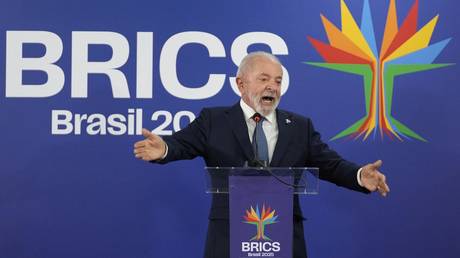10 Essential Tips to Make Cold Calls

Making successful cold calls requires a strategic approach. Start by comprehending the basics and knowing your audience. Research your prospects to identify their needs. Craft a call script that engages them, and be mindful of when you call. Building rapport is crucial, as is handling objections with care. To maximize your success, focus on nurturing relationships rather than just making a sale. Implementing these strategies can greatly improve your outcomes. What comes next is equally important.
Key Takeaways

- Research your prospects thoroughly to understand their pain points and tailor your approach accordingly.
- Use a compelling call script that clearly states your purpose within the first 30 seconds.
- Time your calls strategically, targeting early mornings or post-lunch hours for better response rates.
- Focus on active listening during conversations to build rapport and address the prospect’s needs effectively.
- Follow up promptly with personalized messages summarizing key points and scheduling future engagements.
Understand the Basics of Cold Calling

When you engage in cold calling, you’re reaching out to potential leads who haven’t had any prior interaction with your company, which makes thorough preparation vital. Comprehending the basics of cold calling businesses is fundamental for success.
Begin by recognizing that 57% of C-level executives prefer phone contact, so you’re targeting a receptive audience. Guarantee compliance with regulations like the FTC Telemarketing Sales Rule to avoid legal issues.
Each call should have a clear purpose, engaging opening, and focus on addressing the prospect’s specific pain points. Utilize CRM tools to track calls and gather insights on prospects, which can greatly improve your cold calling strategies and overall sales performance.
With the right approach, you can make cold calling a viable sales technique.
Research Your Prospects Thoroughly

Thorough research on your prospects is an essential step that can greatly improve your cold calling effectiveness. Utilize cold calling tools like LinkedIn, company websites, and recent news articles to gather information about their industry, challenges, and specific needs. Segment your prospect list by industry and job title to make your outreach more relevant. Comprehending the prospect’s role within their organization will help you tailor your approach effectively. Here’s a quick reference table to guide your research:
| Research Focus | Tools/Resources |
|---|---|
| Company Insights | Company website, annual reports |
| Industry Trends | News articles, industry reports |
| Decision-Makers | LinkedIn, company hierarchy |
| Shared Interests | Social media, mutual connections |
| Pain Points | Job descriptions, reviews |
Develop a Compelling Call Script

Developing a compelling call script is crucial for making an impactful first impression during your cold calls. A well-structured sales script template can guide your conversation and improve your connection with prospects.
Follow these steps to create an effective script:
- Research thoroughly: Understand the prospect’s industry, pain points, and recent news to tailor your message.
- Craft a strong opening: State your name, company, and purpose within the first 30 seconds to capture attention.
- Incorporate open-ended questions: Encourage dialogue to gain insights into their needs and challenges.
- Prepare for objections: Anticipate common concerns and develop responses to maintain control during the conversation.
Practicing your script will help you deliver it naturally, ensuring a conversational tone that resonates with your prospects.
Time Your Calls Effectively

Timing your calls can greatly impact your success rate.
Research shows that early morning is the best time to reach C-level executives, whereas mid-level managers are often more available after lunch.
To increase your chances of connecting, aim to avoid voicemail by strategically scheduling your calls during these ideal hours.
Best Calling Hours
Choosing the right time to make your cold calls can greatly impact your success rate.
To find the best way to cold call effectively, consider these ideal calling hours:
- Early Mornings: Reach high-level managers between 8 a.m. and 10 a.m., when they’re often more available.
- Post-Lunch: Call mid-level managers from 1 p.m. to 3 p.m., as they usually have more flexibility during this time.
- Midweek Focus: Wednesdays and Thursdays typically yield higher answer rates compared to other days.
- Avoid Mondays and Fridays: These days are often busy for prospects, making them less receptive to calls.
Avoiding Voicemail Strategies
Finding ways to connect without reaching voicemail can greatly improve your cold calling success. To implement effective avoiding voicemail strategies, time your calls wisely.
Research shows that C-level executives are more likely to answer calls early in the morning or late in the afternoon, so aim for those windows. Moreover, avoid peak hours like lunchtime when prospects may be less available.
Tuesdays and Thursdays are ideal days for cold calls, as studies indicate a higher answer rate on these days. Using call tracking software can help you analyze past data to determine the best calling times for your target audience.
Build Rapport With Gatekeepers

Building rapport with gatekeepers is vital for successful cold calling. They can be invaluable allies in reaching decision-makers. To effectively engage with them, consider these key strategies:
- Show Respect: Treat gatekeepers as important players in the process, acknowledging their role.
- Use a Friendly Tone: A conversational style can create a relaxed atmosphere, making them more inclined to assist you.
- Tailor Your Approach: Understand their challenges and adapt your communication to gain trust.
- Ask for Insights: Politely inquire about the decision-maker’s availability or preferences, demonstrating your willingness to collaborate.
When preparing your call script for outbound calls, incorporate these elements to cultivate a positive relationship, increasing your chances of success.
Engage in Active Listening

Engaging in active listening is essential during your cold calls, as it helps you understand your prospect’s needs better.
By clarifying and confirming their responses, you show that you value their input, which can build trust and rapport.
This approach not just improves the conversation but additionally enables you to tailor your solutions more effectively to address their specific challenges.
Understand Prospect’s Needs
To effectively understand a prospect’s needs during a cold call, it’s essential to engage in active listening. This approach not only builds rapport but also helps tailor your pitch to their specific challenges.
Here are some key strategies to implement:
- Concentrate fully on what the prospect is saying, avoiding distractions.
- Pay attention to nonverbal cues, like tone and inflection, to gauge their engagement.
- Ask open-ended questions to encourage them to share more about their needs.
- Take notes during the conversation to reference specific details later.
Clarify and Confirm Responses
Clarifying and confirming responses during a cold call helps you accurately comprehend the prospect’s needs and concerns, which can greatly improve the quality of the conversation. Engaging in active listening is essential for successful cold call marketing. Use phrases like “So what you’re saying is…” or “Let me confirm that…” to encourage detailed responses. This not only demonstrates you’re attentive but helps build trust.
| Key Aspect | Impact on Relationship | Result |
|---|---|---|
| Active Listening | Builds rapport | Increased trust |
| Clarifying Responses | Reduces misunderstandings | Smoother dialogue |
| Confirming Needs | Guarantees comprehension | Customized solutions |
| Summarizing Points | Reinforces attention | Encourages further discussion |
| Engaging Feedback | Validates feelings | Improves connection |
Handle Objections With Empathy

When a prospect raises an objection during a cold call, it’s critical to approach the situation with empathy to cultivate trust and openness.
Here’s how to handle objections effectively:
- Listen Actively: Pay attention to their concerns, showing that you value their perspective.
- Ask Open-Ended Questions: Encourage them to express their thoughts, which helps you understand their position better.
- Prepare Responses: Anticipate common objections and respond with customized solutions that address their specific pain points.
- Follow Up: After the call, send a personalized message summarizing key points and offering additional resources.
Focus on Relationship Building

Focusing on relationship building during cold calls is essential for achieving long-term success in sales. When you engage prospects in a dialogue, rather than a monologue, you cultivate trust and encourage them to share their challenges. This approach improves your comprehension of their needs and pain points, making future interactions more personalized.
Research shows that 57% of C-level executives prefer phone contact, highlighting the significance of establishing a personal connection. Utilize open-ended questions to gather insights and show genuine interest in their concerns.
Follow up With Purpose

Following up with purpose is a critical component of the cold calling process, as persistence can greatly increase your chances of closing deals.
To effectively follow up, consider these strategies:
- Send a follow-up email summarizing your call, addressing any questions the prospect had.
- Personalize your message based on the prospect’s interests and challenges discussed during the call.
- Schedule follow-up meetings or calls during still engaged, as 70% of prospects prefer this approach.
- Track your follow-up interactions to maintain consistent communication, as Salesforce excelling in lead nurturing generate 50% more sales-ready leads.
Analyze and Improve Your Approach

Analyzing and improving your cold calling approach is essential for maximizing your success rates. Start by tracking metrics like call volume and conversion rates; this data helps identify successful strategies.
Regularly review recorded calls to pinpoint strengths and weaknesses, allowing you to refine your techniques. Gather feedback from peers or mentors after calls, as their insights can provide new perspectives.
Utilize CRM tools to gather insights on prospect engagement, helping you tailor follow-ups more effectively. Finally, stay updated on industry trends to guarantee your outreach remains relevant.
Knowing how to start a cold call with an informed approach will boost your effectiveness, ultimately leading to better relationships and increased sales opportunities.
Frequently Asked Questions

What Are the 3 C’s of Cold Calling?
The 3 C’s of cold calling are Clarity, Curiosity, and Confidence.
Clarity means stating your identity and purpose clearly, so prospects understand your intention.
Curiosity involves asking open-ended questions that encourage dialogue, showing genuine interest in their challenges.
Finally, Confidence is about communicating assertively and positively, which builds trust.
Do and Don’ts of Cold Calling?
When cold calling, focus on a few key do’s and don’ts.
Do research your prospect thoroughly, tailoring your approach to their needs. Engage them with open-ended questions to encourage a conversation.
Don’t start the call with a hard sales pitch; it can create resistance. Avoid being overly aggressive, and always respect their time.
Follow up after the call to reinforce your interest and maintain the relationship. Consistent, respectful communication is crucial for success.
What Is the First 7 Seconds of a Cold Call?
The first seven seconds of a cold call are essential for making a positive impression.
You need to start with a clear introduction, stating your name and company. This establishes authority and clarifies the call’s purpose.
Use a friendly tone to create rapport, which can encourage engagement.
Acknowledge the interruption and ask for permission to speak, showing respect for the prospect’s time.
This approach increases the likelihood of a receptive response.
How to Make Cold Calling Less Boring?
To make cold calling less boring, inject variety into your approach. Research your leads to personalize conversations, and use storytelling to highlight relevant success stories.
Incorporate open-ended questions to encourage dialogue, nurturing engagement. Keep the tone conversational, avoiding robotic scripts.
Furthermore, stay informed about industry trends and current events, which can provide timely conversation starters. Experiment with different call openers to capture interest from the start, making the experience more dynamic for both you and the prospect.
Conclusion
In summary, mastering cold calling requires a strategic approach. By researching your prospects, crafting a strong script, and timing your calls effectively, you can improve your chances of success. Building rapport and handling objections with empathy will help you cultivate relationships. Remember to follow up purposefully and continuously analyze your performance to refine your methods. Implement these tips consistently, and you’ll enhance your cold calling skills, leading to better engagement and increased sales opportunities.
Image Via Envato
This article, "10 Essential Tips to Make Cold Calls" was first published on Small Business Trends
What's Your Reaction?
 Like
0
Like
0
 Dislike
0
Dislike
0
 Love
0
Love
0
 Funny
0
Funny
0
 Angry
0
Angry
0
 Sad
0
Sad
0
 Wow
0
Wow
0





























































































